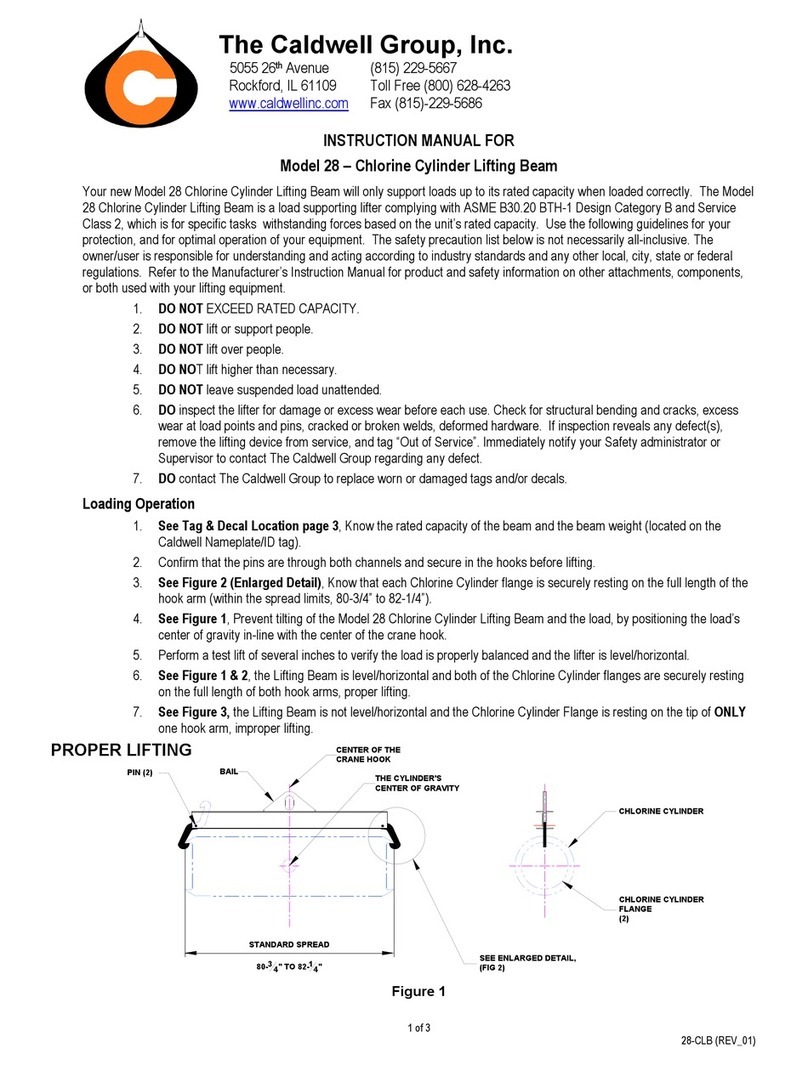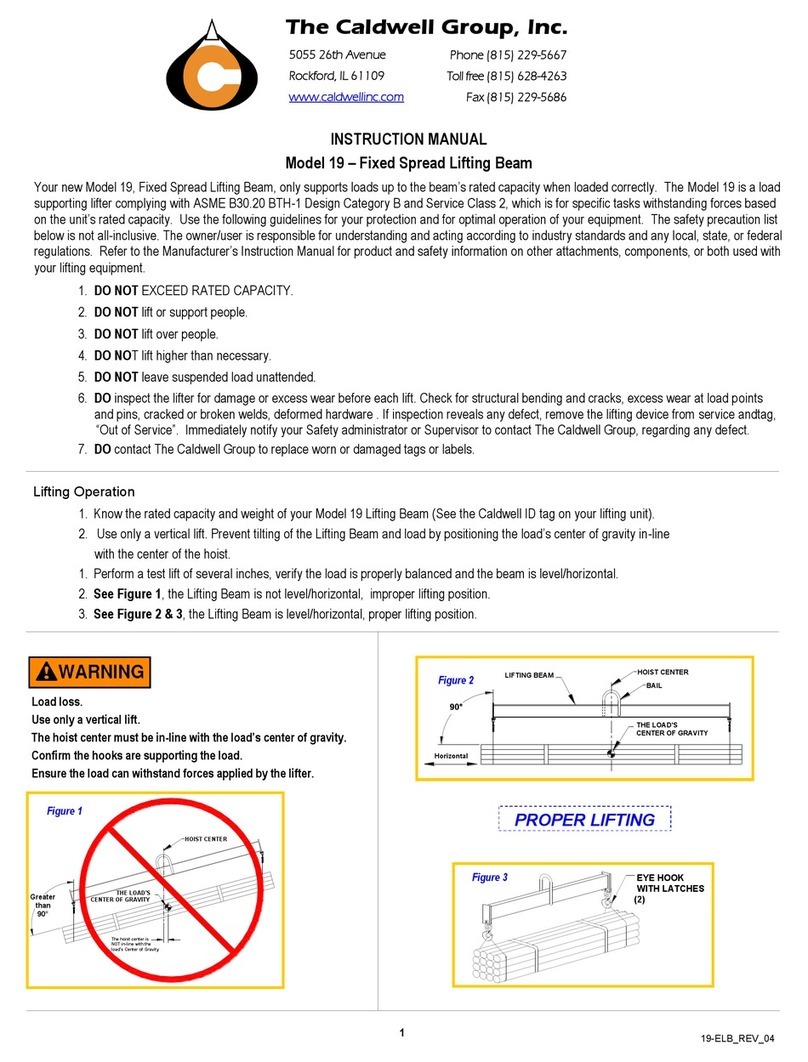
4
Safety Information
Safety
• Check your unit upon arrival, ensuring no damage
or lost parts occurred, during transit. Contact the
carrier’s agent, reporting any loss or damage.
Operating
Lifting Cycle • Do NOT lift an unsafe or unbalanced load.
• Do NOT use a lifter labeled with an
“Out of Service” tag.
• Use ONLY a vertical lift.
• Lifting at angles less than or greater than 90
degrees voids your warranty.
• Start lifting a loaded or unloaded lifter slowly
and gently.
• Raise, lower, or transport the loaded or
unloaded lifter ONLY over specified areas.
• Inspect the load, making sure nothing can fall
from the load or lifter, during loading, lifting, or
transporting cycle—Remove any debris or loose
objects.
• Inspect the lifter, verifying all equipment
adjustments are secure and correct for the
load size and weight.
• Verify each operator is qualified or certified in
proper lifting and rigging techniques, refer to
ASME B30.9 Slings, B30.10 Hooks, and B30.26
Rigging Hardware.
• Request each operator to demonstrate proper
lifting techniques, using the Triangle Beam.
• Verify the travel path is clear.
• Barricade people from swing zones, fall zones,
and crush zones.
• Confirm the weight of the load does NOT exceed
your Triangle Beam’s rated capacity.
• Confirm the combined load and lifter weight
does NOT exceed the hoist’s rated capacity.
Receiving
• Read and understand this manual before
operating, inspecting, maintaining , or servicing
your Triangle Beam.
• Allow only qualified persons to install, operate,
inspect, and maintain your Triangle Beam.
• Confirm the Triangle Beam is
assembled correctly;
-adjustments correct for the load size and weight,
-and all components are securely fastened.
• Perform a test lift before initial use.
• Verify all lifting devices are free from twists,
kinks, or any damages.
• Validate the lifter is correctly, completely seated
in the hoist.
• Confirm the load’s center of gravity is aligned
with the hoist center —before lifting or transport-
ing the loaded lifter.
• Ensure the load can withstand forces applied by
the lifter.
• Make sure the load is secure, preventing the
load from shifting, during the lift.
• Do NOT lift loads over people.
• Do NOT lift people.
• Prohibit any person from riding on the load or
the lifter.
• Obey stop signals from anyone.
• Lift or transport only properly balanced loads.
• Confirm the lifter, loaded or unloaded, is ready
for the hoisting or transporting cycle.
• Verify the transport area is clear of people and
any physical obstructions before the lifting and
transporting cycles begin.
• Accelerate and decelerate all loads slowly and
smoothly.
Before
Operating
Operating































